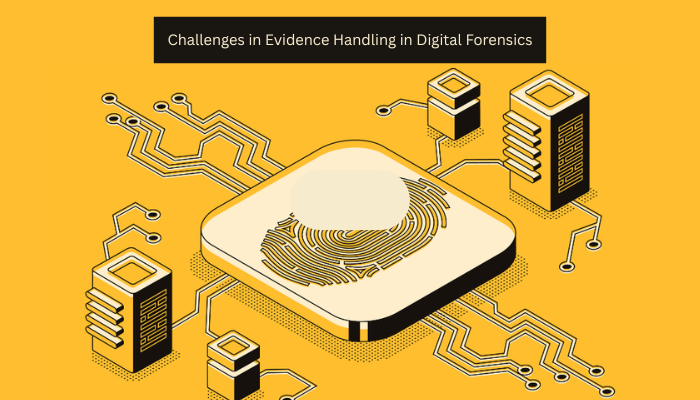Investigating cybercrimes is called digital forensics. It involves acquiring and evaluating digital evidence to maintain its integrity and legal acceptability. The importance of digital data in investigations has led to the use of digital forensics in examining acts like cyberattacks and data breaches. Evidence for data breaches, employee misbehavior and internal security issues, are crucial for organizations to identify the loopholes and implement preventative measures. Digital evidence is time-sensitive, it can be concealed, manipulated or even eliminated.
Problems faced by investigators while handling digital forensics data –
Managing digital evidence and a lack of integration
When evidence is stored across multiple systems, they pose a significant challenge in the management of the same. This makes it difficult to retrieve and examine important information, leading to inefficient and delayed investigations.
Managing Various Digital Devices and Formats
Due to the growth of digital evidence, it is impractical to manually review all data across different devices and file types. One must keep digital evidence in a safe controlled environment, ensuring only authorized personnel to access it.
Human Mistakes Jeopardize the integrity of digital evidence
Having staff with training and expertise is essential. Technology should be used effectively to assist investigators in focusing on the correct information and managing workload.
Risks During the Transfer of Digital Evidence
It is crucial to protect digital evidence while it is in transit, especially when it is saved on password-protected computers or USB devices. Even simple online transfers via email is dangerous.
Unauthorized Evidence Exposure Due to Inadequate Access Control
Uncertain chain of custody records are another issue, as incorrect procedures can lead to evidence exclusion or dismissal of cases. Other challenges include inaccurate or incomplete records, scattered evidence sites, and lack of automation in access points and evidence transfer recording.
Compliance in the Management of Digital Evidence
The digital evidence management laws, such as the CCPA and GDPR, are crucial for maintaining integrity. Agencies should implement guidelines for the saving, discarding, reporting and tracking evidence.
Training and Expertise Gaps
Investigators leading to making mistakes while gathering evidence and ineffective use of technologies. Regular training focused on developing technologies management solutions are important to bridge gaps and ensure the integrity of digital evidence.
Digital evidence is very fragile and one needs to be cautious while handling the same as any misplacement could lead to alteration of the evidence, corruption of the file present, or even loss of data. MailXaminer can help overcome these issues.
The tool is strong to work equally well with web-based email providers and native email clients. Regardless of the email client being used, whether it is a web-based or desktop-based program, it offers all traces of potential incriminating evidence. Outlook PST, Lotus Notes NSF, Thunderbird, Exchange Server and more email formats are available. Office 365, Google Apps, and Gmail are examples of web-based email systems.
Applying hash techniques like SHA1, and SHA256 help protecting the data from being misused. Also by comparing each email’s value, it becomes easier to analyze and spot emails that include misrepresentations.
The problem of various devices and formats is easily handled as the software supports over 25+ email formats (PST, OST, MBOX, etc) and can import data from 80+ platforms. The extent of compatibility makes the tool very efficient in dealing with a variety of data.
The entire process of handling data is automated, which gives no room for human intervention or alteration to the evidence. Features such as Link, Timeline, and word count analysis help the investigator get a clear picture of the result, which helps in reducing any misinterpretation.
To tackle the uncertain chain of custody, the software offers audit trails. Every activity performed on the software, from importing a file to creating a case, applying filters, or exporting a database, is monitored. This eliminates the incompetencies of keeping records and causing human intervention.
The Email forensic device is user-friendly. With detailed guides and courses available on the website for the same, one can learn to use the software very conveniently and in a very short period. Its automated features assist the user in producing precise and accurate results with ease.
Conclusion
Digital evidence is complicated and handling it requires following the rules to forensic techniques and compliance. To ensure adherence, organizations must constantly update their procedures, implement policy-based guidelines and bridge training gaps. In order to overcome these issues, one should choose a MailXaminer to prevent the tampering of data and help in producing effective results.
